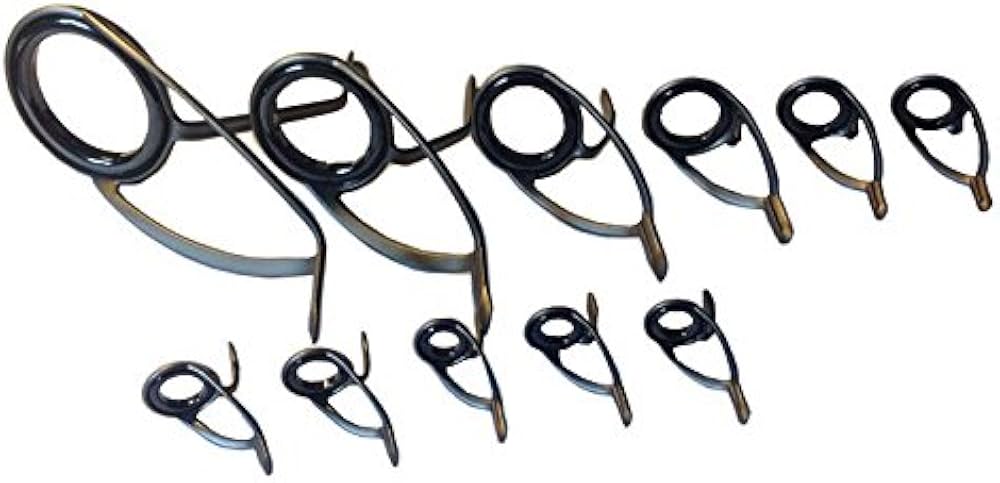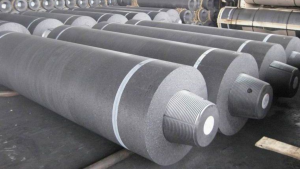
SiC guide rings play a pivotal role in enhancing fishing rod performance. Their silicon carbide ring composition makes them extremely hard, lightweight, and resistant to wear. These features reduce friction and heat, enabling longer casting distances and improving line longevity. High-end rods often incorporate CVD SiC rings or TaC coated guide rings, which further enhance durability and precision. Proper care ensures these premium components maintain their efficiency, providing anglers with smooth and reliable fishing experiences. Neglecting maintenance can lead to damage, diminishing the benefits of these advanced materials, including the TaC coated ring.
Tip: Regularly inspect your TaC coated guide ring for signs of wear to prevent costly replacements.
Key Takeaways
- Clean SiC guide rings often using a soft cloth. This stops dirt and keeps them working well.
- Check guide rings often for cracks or damage. This helps with smooth casting and avoids line breaks.
- Keep fishing rods in padded cases to shield SiC guide rings. This prevents damage and makes them last longer.
Understanding SiC Guide Rings
Features of SiC Guide Rings
SiC guide rings are crafted from silicon carbide, a compound of silicon and carbon atoms. This material is renowned for its exceptional hardness and high thermal conductivity, making it ideal for high-performance fishing rods. The ultra-smooth surface of these rings minimizes friction, allowing fishing lines to glide effortlessly during casting and retrieval. Their lightweight nature reduces the overall weight of the rod, enhancing comfort during prolonged use. SiC guide rings also excel in heat resistance, which is crucial when using modern braided lines that generate significant heat during high-speed casting.
In comparison to traditional materials like stainless steel, SiC offers superior durability and efficiency. While stainless steel is more common, advanced ceramics like silicon carbide and zirconium oxide provide better performance by reducing friction and heat. These features make SiC guide rings a preferred choice for both saltwater and heavy-duty fishing applications.
Benefits of Using SiC Guide Rings
The benefits of SiC guide rings extend beyond their material properties. Their ability to reduce friction and heat translates to longer casting distances and improved line longevity. Anglers using modern braided or superlines often experience enhanced performance due to the compatibility of these lines with SiC rings. Additionally, the durability of silicon carbide ensures that these rings can withstand the rigors of frequent fishing trips, whether in freshwater or saltwater environments.
SiC guide rings also contribute to the overall efficiency of fishing rods. By reducing wear on the fishing line, they help prevent unexpected line breaks, ensuring a smoother and more enjoyable fishing experience. These advantages make them a valuable investment for both amateur and professional anglers.
Why Maintenance Is Crucial for SiC Guide Rings
Proper maintenance is essential to preserve the performance and longevity of SiC guide rings. While these rings are highly durable, neglecting regular care can lead to issues such as damage or decreased efficiency. For instance, dirt and debris can accumulate on the ultra-smooth surface, increasing friction and potentially scratching the ring. Over time, this can compromise the ring’s ability to reduce heat and friction effectively.
Users who maintain their SiC guide rings report fewer problems and longer-lasting performance. Regular cleaning and inspection can prevent cracks or other damage caused by impacts or prolonged use. Additionally, proper storage practices help protect the rings from unnecessary wear and tear. By prioritizing maintenance, anglers can ensure that their SiC guide rings continue to deliver optimal performance for years to come.
Common Concerns About SiC Guide Rings
Are SiC Guide Rings Durable?
SiC Guide Rings are known for their exceptional durability. Silicon carbide, the material used in their construction, ranks among the hardest substances available for fishing rod components. This hardness allows the rings to resist wear and maintain their smooth surface even after extensive use. Anglers often rely on these rings for both freshwater and saltwater fishing due to their ability to withstand harsh conditions. The heat resistance of SiC Guide Rings also ensures they perform well with modern braided lines, which can generate significant friction during casting.
Manufacturers like Ningbo VET Energy Technology Co. design these rings to endure the rigors of frequent fishing trips. Their advanced engineering ensures that the rings retain their performance over time, making them a reliable choice for professional and amateur anglers alike.
Addressing Misconceptions About Fragility
Some anglers mistakenly believe that SiC Guide Rings are fragile due to their ceramic composition. However, this is a misconception. While ceramics can be brittle under extreme impact, silicon carbide is engineered to balance hardness with resilience. Proper handling and regular maintenance further reduce the risk of damage. For instance, avoiding direct impacts and cleaning the rings after each trip can preserve their integrity.
Ningbo VET Energy Technology Co. emphasizes quality control to ensure their SiC Guide Rings meet high durability standards. This attention to detail helps dispel myths about fragility and reinforces the reliability of these components.
Common Issues Caused by Improper Care
Improper care can lead to several issues with SiC Guide Rings. Dirt and debris often accumulate on the ring’s surface, increasing friction and potentially scratching the material. Over time, this can compromise the ring’s ability to reduce heat and friction effectively. Additionally, impacts or rough handling may cause cracks or chips, which can affect the performance of the fishing rod.
Anglers can avoid these problems by adopting simple maintenance practices. Regular cleaning with a soft cloth and inspecting the rings for damage can prevent long-term issues. Proper storage, such as using a rod case, also protects the rings from unnecessary wear. By following these steps, anglers can ensure their SiC Guide Rings remain in optimal condition.
Essential Maintenance Tips for SiC Guide Rings
Cleaning SiC Guide Rings Safely
Keeping SiC Guide Rings clean is essential for maintaining their performance. Dirt, salt, and debris can accumulate on the surface, increasing friction and potentially scratching the ceramic material. To clean these rings safely, anglers should use a soft, damp cloth or a mild soap solution. Avoid abrasive cleaners or brushes, as they can damage the smooth surface of the silicon carbide. For stubborn grime, a soft toothbrush can help remove particles without harming the ring.
After cleaning, thoroughly rinse the guide rings with fresh water to remove any soap residue. This step is especially important for those who fish in saltwater environments, as salt deposits can corrode metal frames over time. Dry the rings completely with a microfiber cloth to prevent water spots or rust. Regular cleaning ensures that the SiC Guide Ring remains smooth and efficient, reducing wear on the fishing line.
Inspecting for Cracks or Damage
Regular inspections help identify potential issues before they affect fishing performance. Anglers should check their SiC Guide Rings frequently, especially after fishing in rocky areas where impacts are more likely. A cotton Q-tip is an effective tool for detecting cracks or chips. By running the Q-tip along the ring’s surface, any damage will snag the cotton fibers, revealing imperfections.
Follow these steps for a thorough inspection:
- Ensure all guide rings align properly along the rod’s blank to minimize line friction.
- Examine the ceramic inserts for cracks or chips and check the metal frames for rust or deformation.
- Verify that the ceramic inserts are securely seated to prevent line snags.
- Inspect the metal frames for bending or warping, particularly where they connect to the rod blank.
Pay special attention to the large stripper guide and tip tops, as these areas endure the most stress. Ningbo VET Energy Technology Co. designs their SiC Guide Rings to withstand rigorous use, but regular inspections will extend their lifespan.
Proper Storage Practices for Fishing Rods
Proper storage protects SiC Guide Rings from unnecessary wear and damage. Always store fishing rods in a dedicated rod case or rack to prevent accidental impacts. Avoid leaning rods against walls or placing them on hard surfaces, as this can bend the metal frames or misalign the rings. For long-term storage, keep rods in a cool, dry place to prevent moisture buildup, which can lead to rust or corrosion.
When transporting rods, use padded cases to shield the SiC Guide Rings from shocks and vibrations. Anglers who fish in saltwater should rinse their rods and rings with fresh water before storage to remove salt deposits. These practices not only preserve the integrity of the SiC Guide Ring but also ensure the entire fishing rod remains in optimal condition.
Best Practices for Using SiC Guide Rings
Preventing Wear and Tear During Use
Preventing wear and tear on SiC Guide Rings begins with proper handling during fishing activities. Anglers should avoid dragging their rods across rough surfaces or allowing the rings to come into contact with abrasive materials. Excessive force on the fishing line can also strain the guide rings, especially during high-tension scenarios like reeling in large catches. To minimize stress, users should maintain a steady and controlled retrieval technique.
Another effective practice involves using a rod with a balanced setup. Ensuring the rod, reel, and line are compatible reduces unnecessary pressure on the SiC Guide Ring. Additionally, anglers should periodically check the alignment of the guide rings to prevent uneven wear caused by misaligned components.
Handling Knots and Line Tangles
Knots and line tangles can damage SiC Guide Rings if not handled carefully. When untangling a line, anglers should avoid pulling it forcefully through the guide rings. This action can create friction and potentially scratch the smooth surface of the silicon carbide material. Instead, they should gently work through the tangles by hand or use a specialized tool designed for this purpose.
To prevent knots from forming, anglers should spool their reels correctly and ensure the line is free of twists before casting. Regularly inspecting the line for damage or irregularities also helps reduce the likelihood of tangles. These precautions protect the integrity of the SiC Guide Ring and enhance the overall fishing experience.
Choosing the Right Fishing Line for SiC Guide Rings
Selecting the appropriate fishing line is crucial for maintaining the performance of SiC Guide Rings. Modern braided lines are an excellent choice due to their compatibility with the smooth and heat-resistant surface of silicon carbide. However, anglers should ensure the line’s diameter and strength match the rod’s specifications to avoid excessive strain on the guide rings.
Monofilament and fluorocarbon lines also work well with SiC Guide Rings, provided they are used within the recommended parameters. Anglers should avoid using damaged or frayed lines, as these can increase friction and wear on the guide rings. Ningbo VET Energy Technology Co. emphasizes the importance of pairing high-quality lines with their SiC Guide Rings to maximize durability and performance.
When to Replace Your SiC Guide Rings
Signs of Damage That Require Replacement
SiC Guide Rings are designed for durability, but certain signs indicate the need for replacement. Cracks or chips on the ceramic surface compromise their ability to reduce friction, leading to potential line damage. Misaligned rings or loose inserts can also disrupt the smooth flow of the fishing line, affecting casting accuracy. Anglers should pay close attention to rust or corrosion on the metal frames, as these issues weaken the structural integrity of the guide rings. Regular inspections, especially after fishing in harsh environments, help identify these problems early.
Temporary Fixes vs. Professional Repairs
Temporary fixes, such as using adhesive to secure a loose insert, may provide short-term solutions but often fail under prolonged use. These quick repairs can exacerbate the damage, increasing the risk of further complications. Professional repairs, on the other hand, ensure that the SiC Guide Ring is restored to its original performance standards. Technicians from reputable brands like Ningbo VET Energy Technology Co. use specialized tools and materials to address issues effectively. Investing in professional repairs not only extends the lifespan of the guide rings but also enhances the overall performance of the fishing rod.
Avoiding Further Damage to Your Fishing Rod
Preventing additional damage to the fishing rod requires proactive measures when SiC Guide Rings show signs of wear. Anglers should follow these steps:
- Inspect the rings after each fishing trip for visible damage and clean any debris or saltwater residue.
- Conduct a monthly inspection for alignment, damage, and insert security, addressing any issues promptly.
- Schedule an annual maintenance with a qualified rod repair technician for a comprehensive assessment.
These practices protect the rod and ensure the SiC Guide Ring continues to perform optimally. Proper care not only prevents costly replacements but also enhances the longevity of the entire fishing setup.
Regular maintenance and proper usage significantly enhance the performance and lifespan of any SiC Guide Ring. Anglers who adopt proactive care habits, such as routine cleaning and inspections, benefit from smoother fishing experiences and fewer equipment failures. With consistent attention, these guide rings deliver exceptional value and reliability, making them an indispensable tool for fishing enthusiasts.
FAQ
What makes SiC Guide Rings better than traditional materials?
SiC Guide Rings outperform traditional materials like stainless steel due to their superior hardness, heat resistance, and smoothness. These features enhance casting distance and reduce line wear.
How often should anglers clean their SiC Guide Rings?
Anglers should clean SiC Guide Rings after every fishing trip, especially in saltwater environments. Regular cleaning prevents debris buildup and ensures optimal performance.
Can SiC Guide Rings handle braided fishing lines?
Yes, SiC Guide Rings are ideal for braided lines. Their heat resistance and smooth surface minimize friction, making them a reliable choice for modern fishing setups.
Tip: For premium SiC Guide Rings, consider products from Ningbo VET Energy Technology Co., known for their durability and precision engineering.





